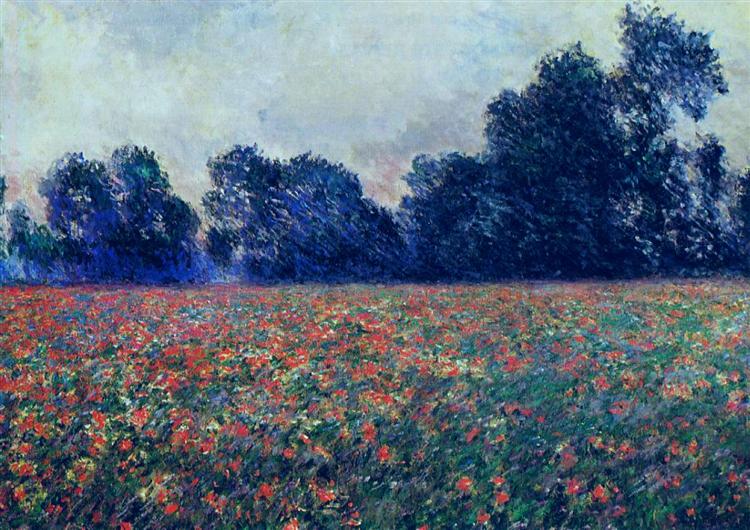Description
In the work "Poppies in Giverny" (1887) by Claude Monet, there is a sublime representation of the relationship between human and nature, immortalized in a landscape that evokes both beauty and efferity. Monet, one of the greatest exponents of impressionism, enters a visual experiment that transcends simple representation, providing the viewer with an almost sensory experience.
The composition focuses on an extensive poppy field that, with its bright and vibrant red tones, contrasts in a amazing way with the richness of green that characterizes the environment. This approach to color use is decisive in the work and is a distinctive seal of Monet's style. The poppies seem to give life and movement to the canvas, creating a dynamic dialogue with the breeze that blows on the field. In addition, the use of loose and vibrant brushstrokes contributes to an atmosphere of immediacy, inviting the viewer to experience nature in an instant of time, in which sunlight caresses each petal with sweetness.
In the background, you can discern the silhouette of Monet's house in Giverny, which not only anchors painting in a specific place, but also talks about his life and work in this charming French town. The inclusion of human figures, although small and almost ethereal, introduces a subtle narrative element to the work. Two women who walk through the field are observed in the distance, their clothes account for the historical context of the time, a time when women began to enjoy greater freedom in their daily activities. This highlights the interactions between the human being and nature, offering an idyllic and almost romantic vision that Monet cultivated in many of his works.
Light plays a crucial role in "poppies in Giverny." Monet was a master in the capture of natural light, and in this painting, You can feel how the sun illuminates and transforms the landscape. This generates a warmth effect that penetrates the very heart of the field and that provides the work with a unique vitality. This treatment of light also suggests the passage of time, since Monet's approach encourages to reflect on the transitory and the eternal in the landscape.
It is relevant to mention that this work was created at a time when Monet was deeply immersed in his exploration of visual perception. Through "poppies in Giverny", Monet not only documented a landscape, but also seeks to represent how light and atmosphere can alter the perception of colors and shapes. This work can be related to others of its impressionist phase, where it emphasizes the representation of natural scenes, such as "the water lies" or "the Ruan Cathedral", where the light and the atmosphere play equally fundamental roles.
Thus, "poppies in Giverny" is presented not only as a visual poem of nature and daily life, but also as a testimony of Monet's ability to capture the essence of the moment. His search for the ephemeral and his ability to evoke emotions through color and light make this work a valuable contribution to art history and a brilliant example of the legacy that has left impressionism. In each brushstroke, Monet invites us to observe not only Giverny's landscape, but also to enter a world where art offers us a new way of seeing life.
KUADROS ©, a famous paint on your wall.
Hand-made oil painting reproductions, with the quality of professional artists and the distinctive seal of KUADROS ©.
Reproduction service paintings With a guarantee of satisfaction. If you are not completely satisfied with the replica of your painting, we refund your money 100%.

